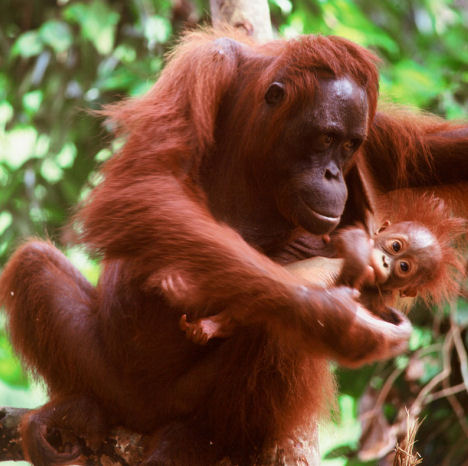In 2006, Indonesia and Malaysia accounted for 83% and 89% of global exports of palm oil respectively, with export trends expected to double by the year 2020. This has led to the expansion of oil palm. While oil palm production is a major source of income for Indonesia, and some oil palm plantations are well managed, others have imposed social and environmental costs. It is recognized that there are environmental pressures on oil palm expansion to areas having high conservation values, including orangutan habitat, causing a significant decline in orangutan populations, particularly as palm oil can only be cultivated in tropical countries such as Indonesia and Malaysia.

It has been demonstrated that oil palm plantations can only support 0 to 20% of the mammals, reptiles and birds that the land supported prior to conversion. Where natural ecosystems have been converted to other land uses, conflicts arise between humans and wildlife, resulting in wildlife being killed, and poached for trade. This includes orangutans, the only great ape found in Asia. Today, orangutans are threatened by extinction in the wild.

Orangutans and many other species are being captured, and often end up injured, starving, or dead. Unplanned forest conversion is exacerbating this situation, completely disregarding the importance of biodiversity as genetic resource for human welfare.
A key issue that needs to be addressed is preventing the increase of conflicts between orangutans and humans. To this end, several conservation organizations and academic institutions have formed a communication forum to develop orangutan rescue guidelines for use by oil palm companies. These technical guidelines were compiled as guiding principles for Better Management Practices (BMP) of human-orangutan conflict management, including the protection of HCVF (High Conservation Value Forests) areas within oil palm plantations. This document aims to help industrial stakeholders identify the right steps to adopt BMP, which is of clear benefit for both conservation and industrial activities.

The authors would like to thank the following individuals and organizations for their contribution to the development of this guide: Marc Ancrenaz, Fitrian Ardiansyah, Monica Borner, Doris Calegari, Stuart Chapman, Marc Dunais, Garreth Goldthorpe, Lone Droscher Nielsen, Amalia Prameswari, Aldrianto Priadjati, Bella Roscher, Anne Russon, Ian Singleton, Jatna Supriatna; Borneo Orangutan Survival Foundation, Conservation International-Indonesia Program, Orangutan Conservancy, Fauna & Flora International Indonesia Program, Sumatran Orangutan Conservation Program, Wildlife Conservation Society-Indonesia Program, World Wide Fund for Nature-Indonesia, WWF-Malaysia, WWF-Switzerland; Universitas Indonesia, Universitas Nasional, The Hacin Family Foundation.


No comments:
Post a Comment